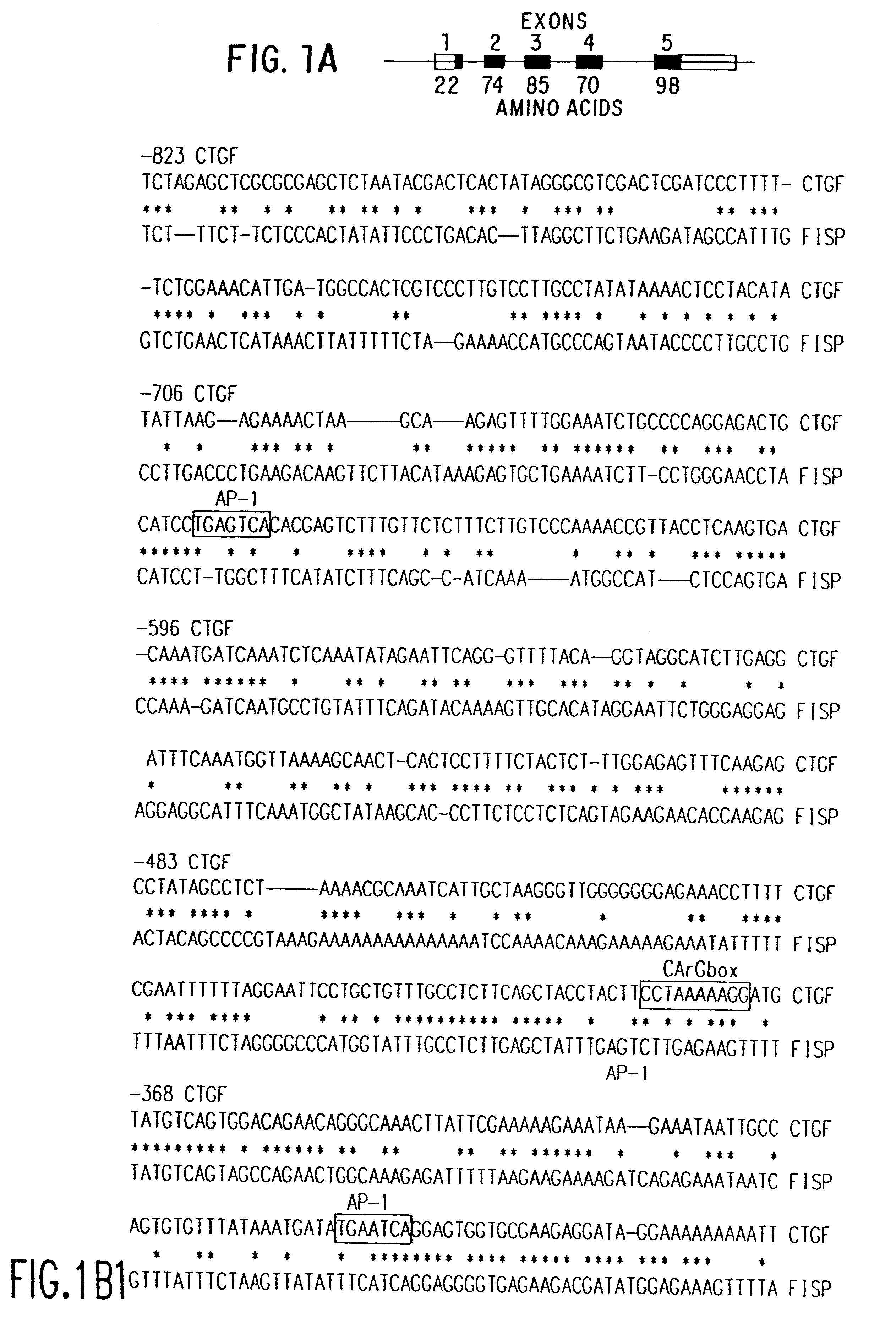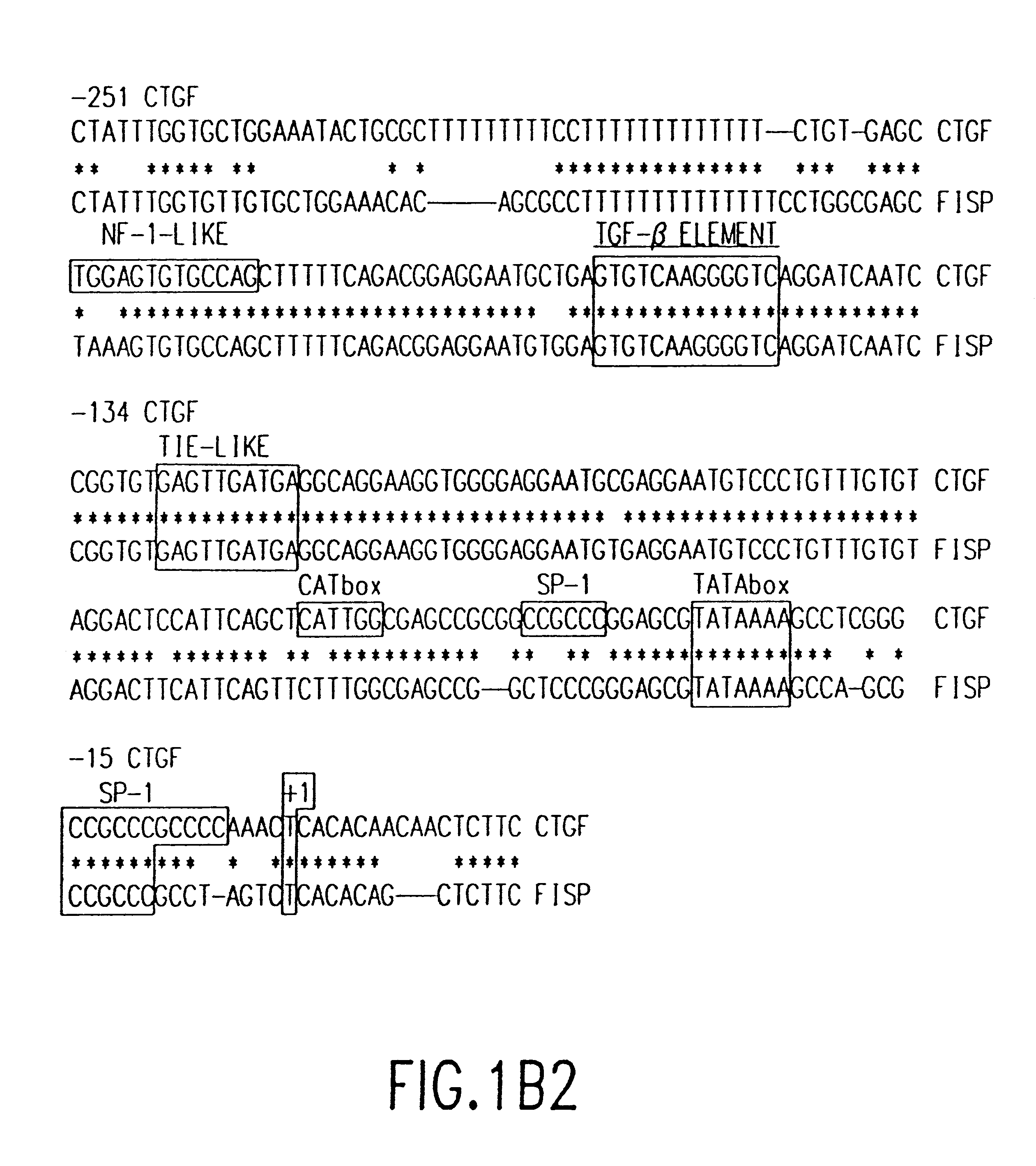Methods and uses of connective tissue growth factor for differentiation of mesenchymal stem cells
a technology of connective tissue and growth factor, which is applied in the field of growth factor, can solve the problems of limited information on the identification of specific factors or the mechanism of action of these factors on skeletal or cartilage formation in vertebrate animals, hindering efforts to define a function of tgf-.beta.s in chondrogenesis, and the synergistic effect of these proteins by tgf-.beta.s is not universal
- Summary
- Abstract
- Description
- Claims
- Application Information
AI Technical Summary
Problems solved by technology
Method used
Image
Examples
Embodiment Construction
7.1. Methods For Making CTGF
Nucleic Acid Sequences Encoding CTGF. In accordance with the invention, nucleotide sequences encoding CTGF or functional equivalents thereof may be used to generate recombinant DNA molecules that direct the expression of the protein or a functional equivalent thereof, in appropriate host cells. Alternatively, nucleotide sequences which hybridize, under stringent position, to portions of the CTGF sequence may also be used in nucleic acid hybridization assays, Southern and Northern blot analyses, etc. In yet another method, DNA molecules encoding CTGF may be isolated by hybridization procedures comprising antibody screening of expression libraries to detect shared structural features.
Due to the inherent degeneracy of the genetic code, other DNA sequences which encode substantially the same or a functionally equivalent amino acid sequence, may be isolated and used in the practice of the invention for the cloning and expression of CTGF. Such DNA sequences inc...
PUM
| Property | Measurement | Unit |
|---|---|---|
| temperature | aaaaa | aaaaa |
| ionic strength | aaaaa | aaaaa |
| pH | aaaaa | aaaaa |
Abstract
Description
Claims
Application Information
 Login to View More
Login to View More - R&D
- Intellectual Property
- Life Sciences
- Materials
- Tech Scout
- Unparalleled Data Quality
- Higher Quality Content
- 60% Fewer Hallucinations
Browse by: Latest US Patents, China's latest patents, Technical Efficacy Thesaurus, Application Domain, Technology Topic, Popular Technical Reports.
© 2025 PatSnap. All rights reserved.Legal|Privacy policy|Modern Slavery Act Transparency Statement|Sitemap|About US| Contact US: help@patsnap.com



